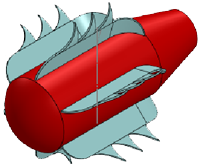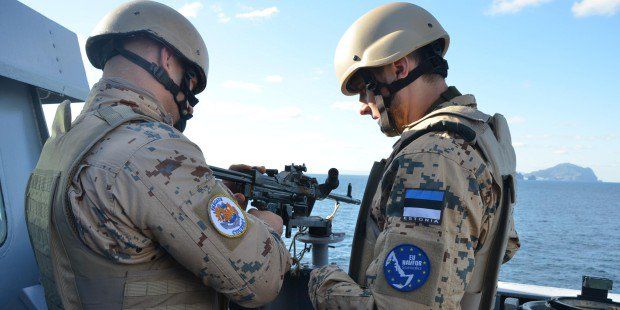Despite a decrease in global piracy during 2012, almost 300 vessels were boarded, hi-jacked or fired upon while sailing on the high seas. In the worst affected areas, such as the coast of Somalia and the Gulf of Aden, warships from a coalition of international navies are on patrol to act as a deterrent and come to the rescue of those ships under attack.
The best defence against piracy is, of course, to prevent it from happening in the first place but this isn’t always possible. So what can you do? At the DSEI arms fair in London, I asked an officer of the North Korean navy and his response was, “Most importantly you need to buy time – then you can raise the alarm and organise your defence. Successful pirate raids are those in which the captured vessel has been caught off-guard.”
The principal weapon is radar – enemy vessels can be spotted and tracked before they are within visual range. But not all civilian radar platforms are able to detect the small and fast moving skiffs that pirates use – in some cases there is only a couple of minutes warning that an attack is about to take place. There are numerous defensive measures that can be employed, such as ear-drum bursting loudspeakers, slippery foam to deter boarding and walls of electrically charged or very hot water but they are all close-range weapons, used when the enemy is already too close for comfort.
Of course, unless you are a military vessel, it is difficult to keep pirate craft away but as my North Korean friend says – you need to buy time. This is the rationale behind Estonian company Mentorplast’s “rotating floats” – keeping the enemy at a distance for as long as possible, giving the crew time to react and plan defensive measures.

The principle of using floats to deter and obstruct pirates isn’t new, but Mentorplast’s are the first to come with sharp, steel jaws which rotate in the water as the floats do. It is difficult enough to try and navigate a vessel under or around older style floats, but when they come armed with steel jaws, the task becomes even more treacherous. The resistant and sturdy construction of the floats also makes the job harder – while they aren’t indestructible, they do take a lot of damage before being destroyed.
This acts as a deterrent in two ways – firstly, pirates will be unwilling to waste scarce ammunition and explosives in destroying armoured floats merely in order to approach their target. Secondly, it wastes precious time – time which could be used to send distress signals to military vessels and to co-ordinate a robust response to the pirates should they get within attacking range of their target vessel.
The floats do not only have a role in protecting ships from piracy, but also in protecting ports. A long chain of floats can be run some distance away from the port entrance, giving security forces the ability to channel all vessels into a specific area and help thwart attacks on moored vessels.
The company behind the floats, Mentorplast, is part of the larger Vesimentor company, which provides 45 different products, all made from different types of plastic. In addition to being a member of the Estonian Defence Industry Union and the Estonian Chamber of Commerce, the company holds ISO accreditations and meets NATO quality assurance requirements.
My North Korean naval friend was suitable impressed when we paid Mentorplast’s stall at DSEI a visit. “You see,” he said, “this is what I mean. If you have a choice of vessels to attack, you attack the one without these [the floats]. And even if you do decide to attack, it will be much, much more difficult. Can I buy one for my yacht?”


Great invention. Go Mentorplast!